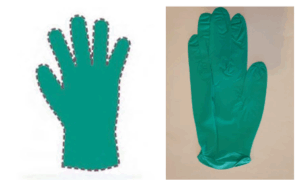Addressing the distinction between conception and reduction to practice and the requirement for written description in the unpredictable arts, the US Court of Appeals for the Federal Circuit explained that proof of conception of an invention does not require that the inventor appreciated the invention at the time of conception. Knowledge that an invention is successful is only part of the case for reduction to practice. Regents of the Univ. of Cal. et al. v. Broad Inst. et al., Case No. 22-1594 (Fed. Cir. May 12, 2025) (Reyna, Hughes, Cunningham, JJ.)
The Regents of the University of California, the University of Vienna, and Emmanuelle Charpentier (collectively, Regents) and the Broad Institute, Massachusetts Institute of Technology, and the President and Fellows of Harvard College (collectively, Broad) were each separately involved in research concerning CRISPR systems that “are immune defense systems in prokaryotic cells that naturally edit DNA.” At issue was the invention of the use of CRISPR systems to modify the DNA in eukaryotic cells. Regents and Broad filed competing patent applications resulting in an interference proceeding under pre-AIA law at the US Patent & Trademark Office Board of Patent Appeals & Interferences to determine which applicant had priority to the invention.
The main issue before the Board was a priority dispute over who first conceived of the invention and sufficiently reduced it to practice under pre-AIA patent law. Regents submitted three provisional patent applications dated May 2012, October 2012, and January 2013 and moved to be accorded the benefit of the earliest filing date, May 2012, for the purpose of determining priority. Alternatively, Reagents sought to be accorded either October 2012 or January 2013 as its priority date. The Board found that Regents’ first and second provisional applications (filed in May and October 2012, respectively) were not a constructive reduction to practice because neither satisfied the written description requirement of 35 U.S.C. § 112. The third provisional application, filed in January 2013, was the first to amount to a constructive reduction to practice of the counts in interference. The Board then ruled that Broad was the senior party for the purposes of priority in the interference proceeding because Broad reduced the invention to practice by October 5, 2012, when a scientist submitted a manuscript to a journal publisher. The Board ruled that Regents failed to prove conception of the invention prior to Broad’s actual reduction to practice. Regents appealed.
Regents argued that in assessing conception, the Board “legally erred by requiring Regents’ scientist to know that their invention would work.” The Federal Circuit agreed and vacated the Board’s decision. As the Court explained, there are three stages to the inventive process: conception, reasonable diligence, and reduction to practice. At the conception stage, “an inventor need not know that his invention will work for conception to be complete.” Rather, knowledge that the invention will work, “necessarily, can rest only on an actual reduction to practice.” The Board therefore legally erred by requiring Regents to know its invention would work to prove [...]
Continue Reading
read more

 Subscribe
Subscribe



